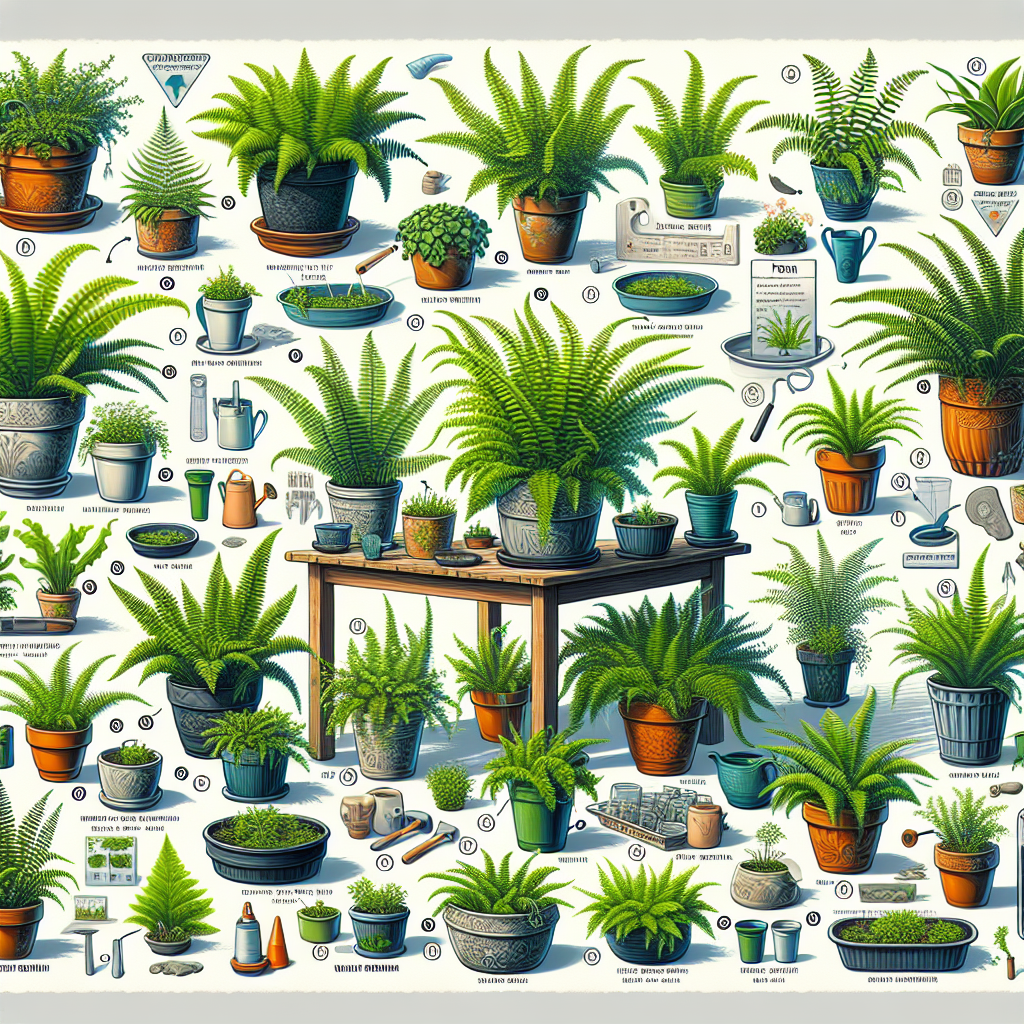Ferns are one of the most popular choices for container gardening enthusiasts due to their lush, green foliage and low maintenance requirements. Whether you have a small balcony, a patio, or a backyard garden, ferns can add a touch of elegance and beauty to your outdoor space. In this ultimate container gardening guide for fern lovers, we will discuss everything you need to know about growing and caring for ferns in containers.
Choosing the Right Ferns for Your Container Garden
When it comes to choosing the right ferns for your container garden, there are several factors to consider. First and foremost, you need to determine the growing conditions of your outdoor space. Ferns thrive in shady or partially shady areas with well-draining soil. If you have a sunny balcony or patio, make sure to place your containers in a spot that receives indirect sunlight or dappled shade.
There are hundreds of different fern varieties to choose from, each with its unique characteristics and care requirements. Some popular ferns for container gardening include Boston ferns, maidenhair ferns, bird’s nest ferns, and rabbit’s foot ferns. Consider the size of your containers and the amount of space you have available when selecting fern varieties for your garden.
Preparing Containers for Fern Planting
Once you have chosen the right ferns for your container garden, it’s time to prepare your containers for planting. Ferns require well-draining soil that is rich in organic matter. To create the perfect growing medium for your ferns, mix equal parts potting soil and peat moss with some perlite or sand to improve drainage.
Make sure your containers have drainage holes at the bottom to prevent waterlogging, which can lead to root rot and other fungal diseases. Line the bottom of your containers with a layer of gravel or broken pottery shards before adding the soil mixture to improve drainage further.
Planting Ferns in Containers
When planting ferns in containers, it’s essential to create an environment that mimics their natural habitat. Start by filling your containers with the prepared soil mixture until they are about two-thirds full. Remove the fern plants from their nursery pots and gently loosen their roots before placing them in the center of each container.
Fill in any gaps around the plants with additional soil mixture, making sure not to bury the crowns or rhizomes too deep as this can lead to rotting. Water your newly planted ferns thoroughly until excess water drains out from the bottom of the containers.
Caring for Ferns in Containers
Caring for ferns in containers is relatively easy once you understand their basic requirements. Watering is one of the most crucial aspects of maintaining healthy fern plants. Keep the soil consistently moist but not soggy by watering lightly whenever it feels dry to the touch.
Fertilizing is another essential part of caring for container-grown ferns. Feed your plants with a balanced liquid fertilizer every two weeks during the growing season (spring and summer) to promote healthy growth and vibrant foliage.
Pruning is necessary to keep your container-grown ferns looking their best. Remove any dead or yellowing fronds regularly to encourage new growth and prevent disease spread throughout your garden.
Protecting Fern Plants from Pests and Diseases
Like all plants, ferns can be susceptible to pests and diseases if not properly cared for. Common pests that affect container-grown ferns include aphids, spider mites, mealybugs, and scale insects. Keep an eye out for any unusual signs on your plants such as yellowing leaves or sticky residue on foliage as these may indicate pest infestations.
To protect your precious fern plants from pests, spray them with neem oil or insecticidal soap regularly as a preventive measure. If you notice any signs of infestation on your plants, isolate them immediately from other healthy plants and treat them accordingly using organic pest control methods.
As for diseases that affect container-grown ferns, root rot is one of the most common issues caused by overwatering or poor drainage. To prevent root rot from occurring in your garden,
Conclusion
Container gardening is a versatile way to enjoy beautiful foliage plants like ferns even if you have limited outdoor space at home. By following this ultimate container gardening guide forfern lovers , you can create a lush green oasis right outside your doorstep while caring for these delicate woodland favorites . With proper selection , preparation , planting , care ,and protection against pests and disease , yourcontainer -grownferns will thrive and add beautytoyour outdoor space all year round .














